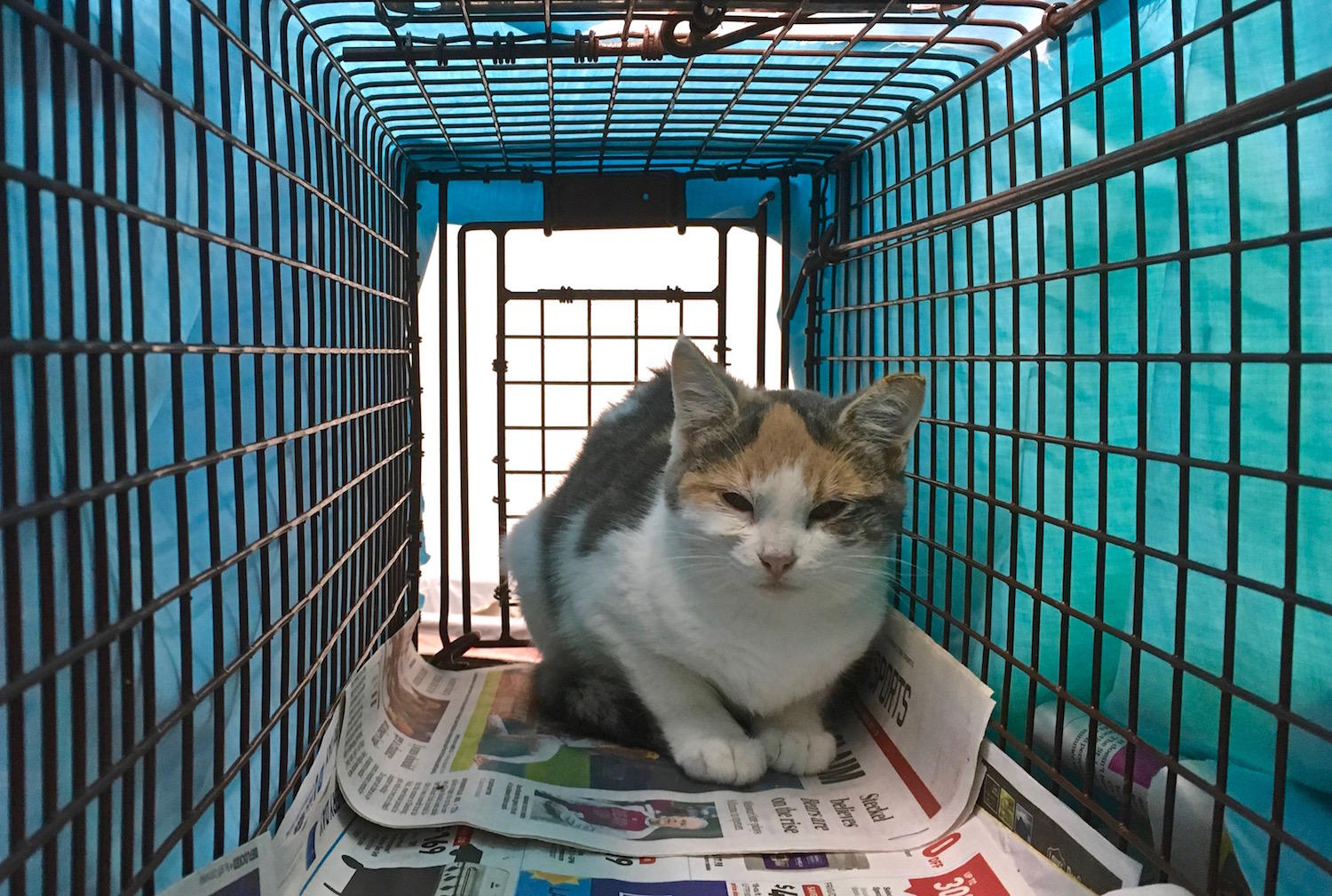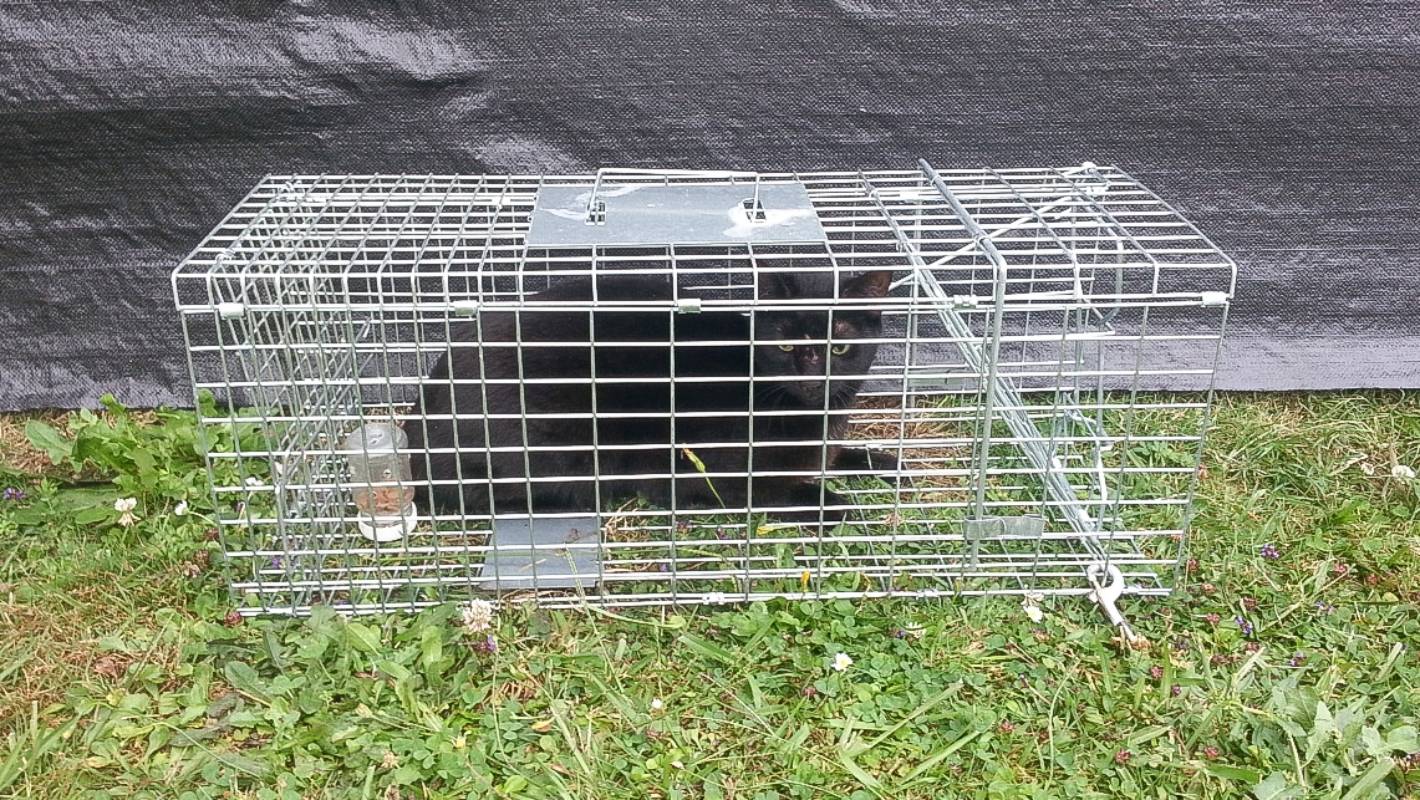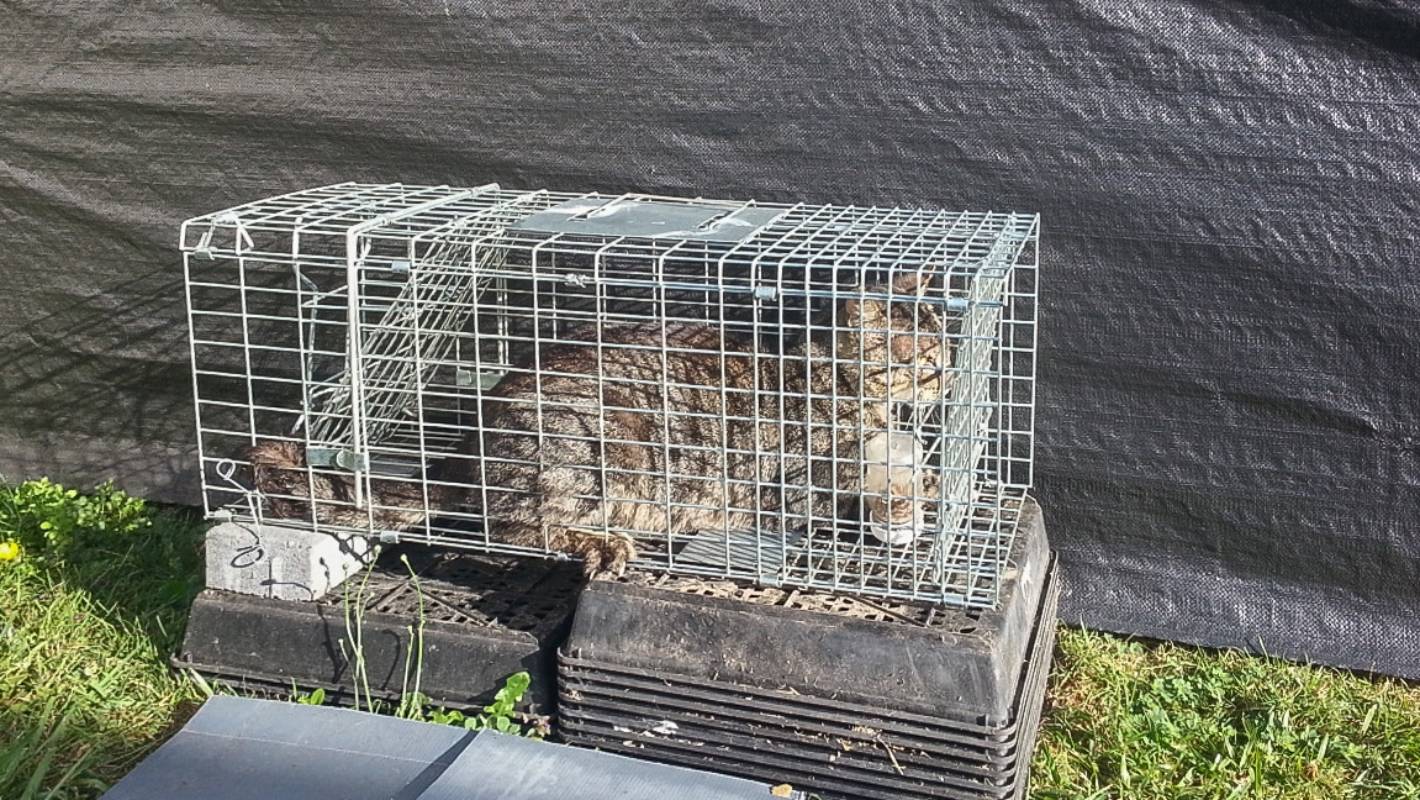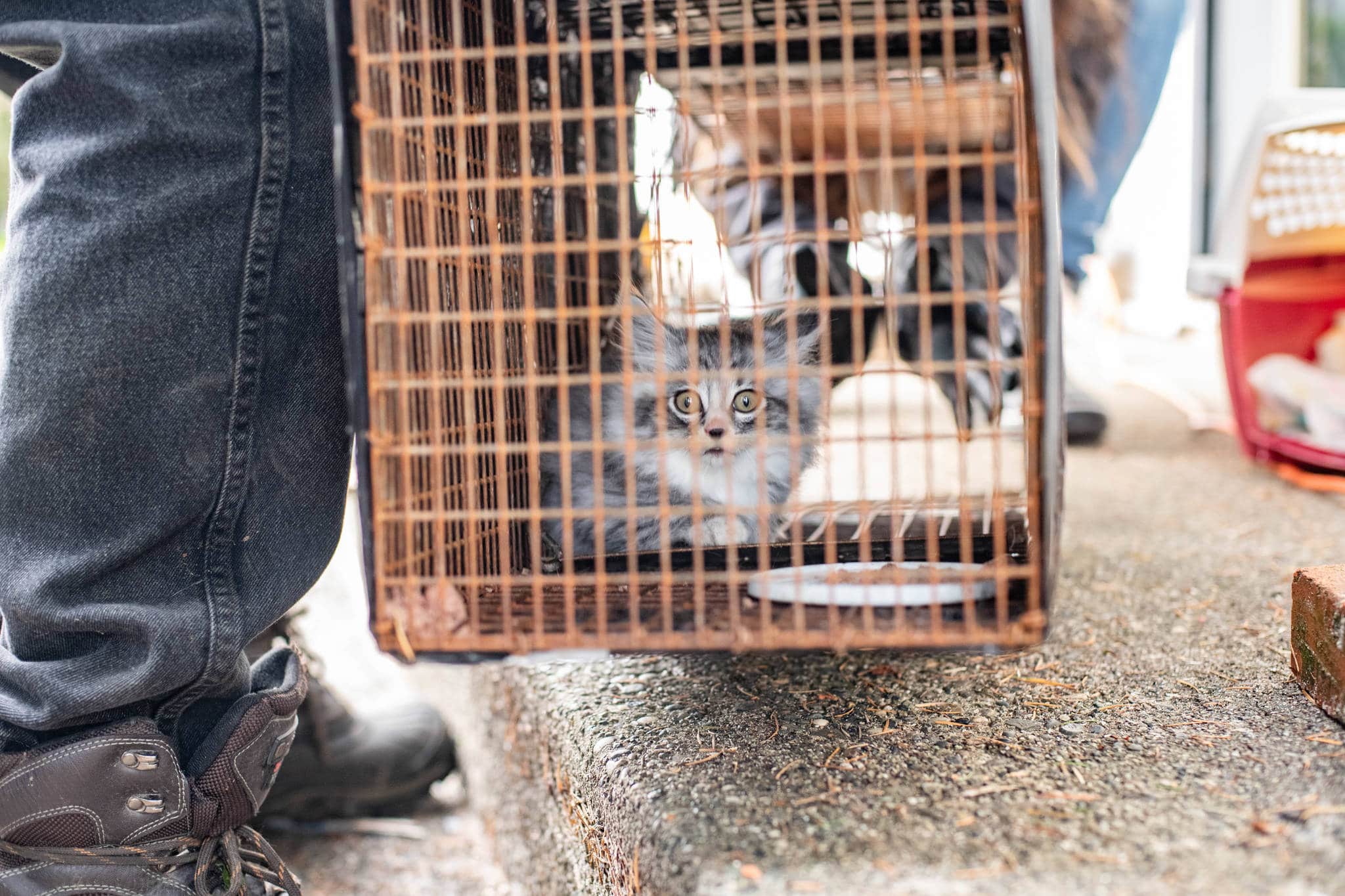
If you are taking care of cats in a colony and one of them has become ill, or you have a furry that does not like visits to the vet at all, you need something with which you can catch it without hurting it and that, at the same time, facilitates the I work to the professional. Introducing a feline of these characteristics in a carrier can be an odyssey, often insurmountable, that is why you're going to need some cat-friendly cat traps.
For that, there is nothing better than trap cages, like the one you can see above. You can get it in any pet store, but you will have to overcome a challenge: how to get the cat to enter it? For that we are going to help you.
What are cat traps?
This type of cage is the accessory that many people use to capture cats that have escaped, that are very afraid of the vet, or that, having not been socialized with people, do not know how to be calm in their presence.
They are made of stainless steel, so they can stay abroad for several days until they do their job.
How to get the cat in?
The fastest way to achieve our goal is putting food that you really like (for example, wet food) on a plate and hiding the cage, either with blankets if we are going to put it inside the house for our furry, or with branches and grass if it is to catch a stray cat. Then we just have to wait.
The time will vary depending on the animal itself. Sometimes it may be a few minutes, but at other times it could be days. If you are one who lives on the street and needs urgent veterinary attention, I recommend asking volunteers for help. Although in other circumstances we would avoid it, in some situations there will be no other than to corner him so that he is forced to enter the cage. I repeat, this will only be done when the furry's life is at risk, when you have suffered a major accident or have any serious illness that prevents you from breathing well and leading a normal life.
How to catch difficult cats without hurting them
In almost all colonies, there is at least one cat who is very cunning or shy and will not enter a normal cage trap, no matter how long you hold food or how much you spend on roast chicken, mackerel, sardines, roast beef, or whatever. other food that may interest you.
Before you give up and try to find a place to live where there are no feral cats… Try one of our hard-to-catch cat methods. One word of warning: don't use nets, net guns, tweezers, dart guns, or tranquilizers. These tools can be extremely dangerous for both the cat and the hunter and should only be used, if they do, by trained animal control professionals.
Types of cat traps
Fall Cage Trap
The cage trap is the one that we have mentioned above but we are going to comment on some peculiarities. Most cats have a natural fear of going into a normal cage trap, so you should remove the food the day before and make sure they are very hungry before you go out to catch them.
Even after a day without food, some still don't get in. For these reserves, a fall trap is perfect. Cats are not afraid to go under a fall trap instead of falling into a box trap. As a result, a fall trap will be ideal for most hard-to-catch felines.
Camouflage trap
A feral cat will be most comfortable entering a box trap when the trap appears to be a natural part of its environment. If you are working in a grassy or wooded area, camouflage the trap by first laying the burlap on the trap floor and over the top and sides.
Leave the front and rear doors uncovered so the cat can enter unobstructed and have a clear view of the rear. Lay leaves, sticks, and other loose natural matter on the burlap. If possible, place the trap near a bush or under a tree to make it look even more like it's part of the environment.
Similar techniques can also be applied in other settings. In a more urban or industrial setting, place the trap inside a long cardboard box, exposing the front and back doors. Then sprinkle debris and material from the immediate surrounding area into the box. Or you can lean a board against a wall or fence and place the trap underneath it. The more the trap is mixed up, the more likely the cat is to get in.
Training the cat to enter a trap
If you can safely leave an outdoor trap in the cat's territory for an extended period of time, it is possible to train the cat to enter. The area should be secure so that no one goes outside with the equipment, such as a private patio. You can also train an entire colony with this method, using one trap per cat. The process generally takes one to two weeks. For each trap deployed, follow these instructions:
Secures the front door of the trap in an elevated position. You can run a stick through the sides of the trap to prevent the door from falling, or use a tie or similar to tie it in place.
Place the trap in the cat's territory near the normal feeding spot. Leave it in place throughout your workout.
On the first day of training, place the cat's usual food on the ground one meter from the main door of the trap. Use a small bowl or plate. It starts further for a scarier cat.
Keep placing the plate in this place, at the same distance from the trap, until the cat begins to eat the food. Later, for the next meal, move the plate about 3 cm closer to the main door of the trap. When the cat begins to eat from this new place, move the plate closer to the front door again.
Repeat this process until the food avocado is right next to the front of the trap.. When the cat is comfortable eating there, move the plate a few inches into the trap. Keep waiting for the cat to eat, then move the plate a few more inches until it is completely at the back of the trap and fetch it.
On the scheduled capture date, the moment the cat is used to eating, untie or unlock the front door, place the bait in the trap, and activate the trigger.
If you have to use this method somewhere that is not totally safe, remove the back door of the trap and take it with you. This will make the trap useless to anyone with bad intentions. You won't be able to train the cat to go to the end of the trap, but you can train it to eat in the middle, which should be good enough. Try to place the trap somewhere hidden and use a chain and padlock to secure it to an immovable object like a post or fence. If the area is too accessible to the public and the risk of vandalism or theft is high, do not use this method.
Trap with transparent back door
A trap shy cat will be less afraid of entering the narrow confines of a box trap if he thinks there is an exit at the other end. One way to create the illusion of a rear exit is with a transparent rear door. The regular wire mesh rear door is replaced.
If you are using another type of trap, go to a local hardware store or lumberyard that will cut a thick piece of Plexiglass to the correct size. Have them drill a hole centered near the top, and then secure the clear door to the trap with a cable tie or sturdy clamp. After catching your elusive cat, section to the front of the trap with a trap divider, then replace its clear door with the normal one.
I hope this article has been useful to you 🙂.


